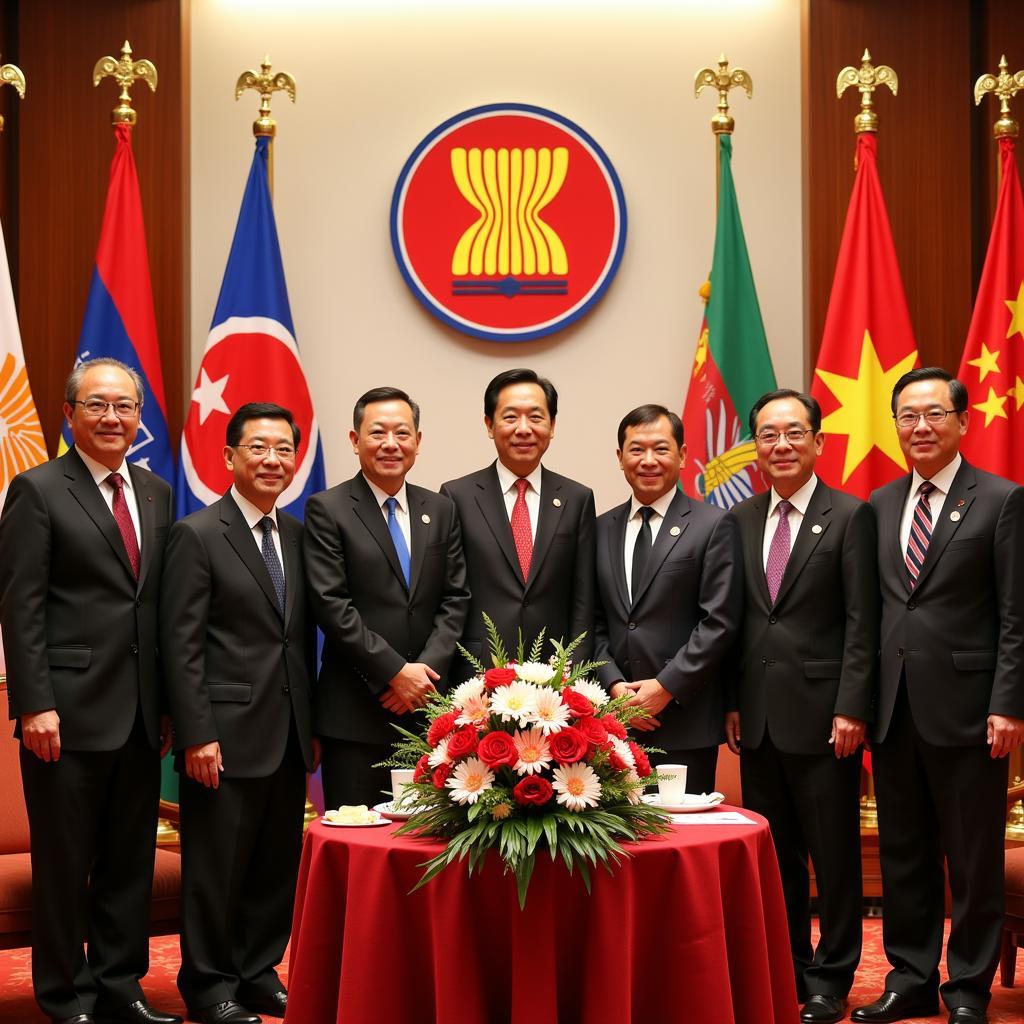The Asean Annual Report 2010 serves as a comprehensive time capsule, capturing the socio-economic landscape, key achievements, and future aspirations of the Association of Southeast Asian Nations (ASEAN) during that pivotal year. This report offers valuable insights into the region’s journey towards integration and provides a foundation for understanding the subsequent developments that have shaped ASEAN into the dynamic regional bloc it is today.
ASEAN in 2010: A Year of Growth and Integration
2010 marked a significant year for ASEAN as it continued to solidify its position on the global stage. The ASEAN annual report 2010 highlighted the region’s resilience in the face of the global financial crisis, demonstrating robust economic growth and a renewed commitment to regional cooperation.
One of the key focuses of the ASEAN annual report 2010 was the progress made towards the establishment of the ASEAN Economic Community (AEC), envisioned to transform Southeast Asia into a single market and production base. The report meticulously detailed the various initiatives undertaken to enhance regional connectivity, facilitate trade, and attract foreign direct investment.
Key Takeaways from the ASEAN Annual Report 2010
The ASEAN annual report 2010 provided a comprehensive overview of the region’s progress across various sectors, including:
- Economic Performance: Despite global economic uncertainties, ASEAN economies demonstrated resilience and recorded impressive growth rates, solidifying the region’s status as an emerging economic powerhouse.
- Trade and Investment: The report highlighted the significant strides made in enhancing intra-ASEAN trade and attracting foreign direct investment, paving the way for greater economic integration.
- Connectivity: Recognizing the crucial role of infrastructure in fostering seamless connectivity, the report underscored initiatives aimed at developing transport networks, energy grids, and digital infrastructure.
- Social and Human Development: Beyond economic indicators, the report emphasized ASEAN’s commitment to improving the lives of its people through initiatives focused on education, healthcare, poverty reduction, and social protection.
The Significance of the 2010 Report in ASEAN’s Journey
The ASEAN annual report 2010 serves as a valuable historical document, offering a glimpse into the organization’s priorities and achievements at a crucial juncture. It provides a benchmark against which subsequent progress can be measured and underscores the continuous efforts undertaken by ASEAN member states to realize their shared vision.
“The 2010 report captures a pivotal moment in ASEAN’s history,” says Dr. Amelia Nguyen, a prominent Southeast Asian Studies scholar. “It showcases the region’s determination to forge a common path towards greater integration and prosperity, laying the groundwork for the transformative changes that have come to define ASEAN in the years since.”
Looking Back to Move Forward
The ASEAN annual report 2010 serves as a reminder of the power of collective action and regional cooperation. By examining the achievements and challenges highlighted in the report, policymakers, researchers, and citizens alike can gain valuable insights to inform current and future endeavors aimed at building a more integrated, prosperous, and resilient Southeast Asia.
 ASEAN Leaders at the 2010 Summit
ASEAN Leaders at the 2010 Summit
Conclusion
The ASEAN annual report 2010 provides a valuable snapshot of a transformative period in the region’s history. This report, with its focus on economic growth, regional integration, and social progress, offers a compelling narrative of ASEAN’s journey toward becoming a global player. By understanding the context and insights presented in the 2010 report, we can better appreciate the strides made by ASEAN and contribute to its continued success in the years to come.